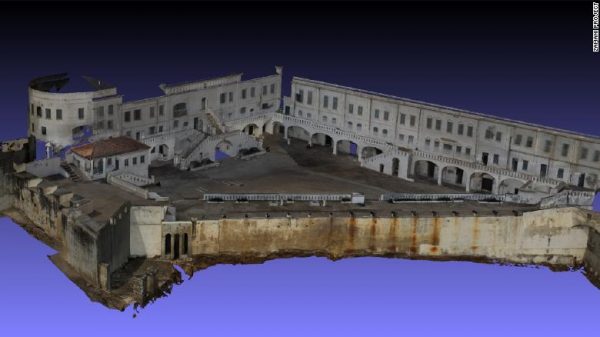The South African Project Working to Preserve Africa’s Past Heritage in Virtual Reality
The recent fire tragedy at the National Museum of Brazil underscored the importance of going the extra mile to preserve historical and cultural memory. In many countries, such heritage is at risk not just due to accidents and inadequate government funding but also due to conflict and vandalism. Such has been seen in conflict zones such as Mali and Libya where militants have often targeted cultural and historical symbols and institutions as a way of getting back at the establishment. Digitization is one of the best ways through which the world’s cultural heritage can be captured and preserved for posterity.
A South African initiative dubbed Zamani Project is seeking to do just that by preserving Africa’s historical and cultural heritage using virtual reality. “Zamani” is the Swahili world for the past and the project seeks to digitally capture and record some of Africa’s greatest cultural and historical sites and preserve them for future generations. The sites will be modeled in virtual reality thereby creating highly immersive and realistic-looking images of the archaeological sites that will offer users a walk-through in VR through the sites. Various initiatives such as this aimed at cultural and historical preservation are already going on throughout the world but this is the first major initiative of its kind in Africa.

The project is based in the University of Cape Town and will record Africa’s vast archaeological treasures in countries such as Kenya, Ethiopia, Sudan, Algeria, Mozambique and Mali among others and render these into a high quality virtual reality experience.
The Zamani Projects aims to create digital representations of African historical sites which are metrically accurate with aim of not just preserving these sites for future generations but also providing accurate data for conservation, research, restoration and educational purposes. Through its digital and VR modeling of these sites, the project team hopes to increase people’s awareness about Africa’s tangible cultural heritage.
With threats such as climate change, conflicts, vandalism, natural disasters, theft and neglect dooming most of these sites to destruction and complete loss of the cultural heritage, the project also hopes to make a contribution in the race against time to preserve this heritage for posterity.
African countries face a myriad of challenges relating to poverty and underdevelopment so funding for cultural projects is generally limited. As a result, many of the continent’s many treasures are now falling into disrepair. Such a project provides a viable alternative of preserving such treasures for posterity.
The Zamani Project will build a database of the cultural projects in 3D lifelike models. The documentation work has so far mapped out over 60 sites across Africa including famous monuments such as the ancient rock-hewn churches in Lalibela in Ethiopia. The Zamani Project has been running for more than a decade and the team working on the project has successfully mapped out numerous sites across Africa.
The mapping process is quite elaborate with a single site generally taking several months to document with the team using drones and high tech lasers to capture the images. The team has to surmount lots of challenges in accessing and capturing the detail in these sites are some of them are situated in hostile regions that are currently plagued with conflicts. In some cases, they face a lot of suspicion with local authorities sometimes assuming the team is engaging in espionage!
Still, in spite of the challenges, the team has done an impressive job. They record the archaeological structures by positioning the high-tech laser scanners in various angles in the structure and then sending lasers capable of recording 10,000 points per second to capture maximum detail in the structures.
The team captures the spatial data about these sites by using a multiplicity of techniques and tools such as laser scanning, photogrammetry, GPS technology, animation software, Geographical Information Systems (GIS) and 3D modeling software. The Zamani Project team makes use of these resources to create 3D models, plans and sections of the historical structures. Additionally, they also create animations, elevations, panoramas, panorama tours and an interactive virtual reality rendering that accurately captures the dimensions and the architectural detail of the physical structures as well as the topography around the sites.
While much of the projects work has been focused on Africa, they have also worked in archaeological sites in the Middle East and South East Asia. All the sites are presented within the context of the physical environment that they reside in. In some cases, the topography of the landscapes is also captured using aerial photography and satellite images.
The finished product from this documentation work is presented to users in virtual reality. Users wearing virtual reality glasses can walk through the historical and cultural heritage sites and get a very realistic experience of how these sites actually look and feel like.
https://virtualrealitytimes.com/2018/09/15/the-south-african-project-working-to-preserve-africas-past-heritage-in-virtual-reality/https://virtualrealitytimes.com/wp-content/uploads/2018/09/The-Zamani-Project-is-Working-to-Preserve-Africa-Historical-Sites-in-Virtual-Reality-600x337.jpghttps://virtualrealitytimes.com/wp-content/uploads/2018/09/The-Zamani-Project-is-Working-to-Preserve-Africa-Historical-Sites-in-Virtual-Reality-150x90.jpgVirtual TravelThe recent fire tragedy at the National Museum of Brazil underscored the importance of going the extra mile to preserve historical and cultural memory. In many countries, such heritage is at risk not just due to accidents and inadequate government funding but also due to conflict and vandalism. Such...Sam OchanjiSam Ochanji[email protected]EditorVirtual Reality Times - Metaverse & VR

